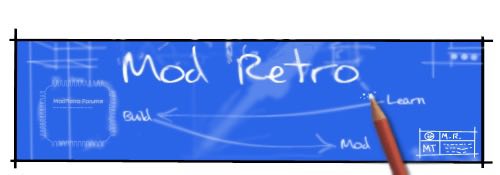I'm a big fan of the phrase "Go big or go home". So.... I've being working on my N64 portable and wanted to try something different; a custom printed circuit board just like the one kibble attempted to do over at Ben Heck forums. Anyways, it's definitely not ready yet but a few teasers meanwhile:
Schematic (click here)
Circuit Board (click here). You probably really want to see this.
The first board is the main circuit board (everything but the fully sized cart connector, L and Z triggers, and D-pad). Note the separate board in the corner, which is L and Z triggers. The second board is there to adapt the small 40 pin connector on the motherboard to the 50 pin cart connector. It goes at a right angle to the first board. The last pic shows the board versus a 3.5 inch screen.
Anyways, on to features
-LCD controller on board (click here)
-Battery protection/charger on board
-3.3v regulator on board
-Controller on board (will use an atmega, will have to program it later on to follow N64 controller specs. The protocol is online somewhere for pic)
-Some of the buttons on board (left side is on a separate, smaller board to save money on pcb manufacture)
Likely Questions
*Do you think it will work?
I honestly don't have a clue. I'm particularly worried about crosstalk between signals, as my traces are close together than those on the original board
*Is that schematic accurate?
Hopefully, but again, I don't really have a clue
*Does that thing uses a qfn (no leads quad flat package)?
Yep
*Are you going to use solder paste/oven?
Nope. Hot air for the qfn's, soldering iron for pretty much everything else.
*That looks like a pain to solder
Don't remind me. It will be a real PITA no matter how you look at it.
*When will this be ready?
Not soon I'm afraid. I am currently on Panama (my home country), but I will go to the US in mid-August as I'm studying over there. Once I'm there, Ill get the boards and start soldering. Its a long soldering job (specially if done by hand), and I will do it on my spare time between studying, so it might take a while.
*Will you release the board artwork?
I'm getting the boards made through OSH park. If it works (emphasis on IF), I will sell my remaining two boards (they only sell in multiples of three). After selling the two boards, I'll release the files. (All this will only happen if it works)
*You don't sound really confident
I'm not really expecting it to work. I feel more like I'm playing the lottery and *trying* to get it to work.
Any potential issues
-I have no idea what the "feel" of the smd tact switches I'm planning on using will be
-It may not work at all
-I still need to figure out the case. (I got access to many tools at the university, I just need to figure out where to start. Casework isn't exactly my strength. )
Schematic (click here)
Circuit Board (click here). You probably really want to see this.
The first board is the main circuit board (everything but the fully sized cart connector, L and Z triggers, and D-pad). Note the separate board in the corner, which is L and Z triggers. The second board is there to adapt the small 40 pin connector on the motherboard to the 50 pin cart connector. It goes at a right angle to the first board. The last pic shows the board versus a 3.5 inch screen.
Anyways, on to features
-LCD controller on board (click here)
-Battery protection/charger on board
-3.3v regulator on board
-Controller on board (will use an atmega, will have to program it later on to follow N64 controller specs. The protocol is online somewhere for pic)
-Some of the buttons on board (left side is on a separate, smaller board to save money on pcb manufacture)
Likely Questions
*Do you think it will work?
I honestly don't have a clue. I'm particularly worried about crosstalk between signals, as my traces are close together than those on the original board
*Is that schematic accurate?
Hopefully, but again, I don't really have a clue
*Does that thing uses a qfn (no leads quad flat package)?
Yep
*Are you going to use solder paste/oven?
Nope. Hot air for the qfn's, soldering iron for pretty much everything else.
*That looks like a pain to solder
Don't remind me. It will be a real PITA no matter how you look at it.
*When will this be ready?
Not soon I'm afraid. I am currently on Panama (my home country), but I will go to the US in mid-August as I'm studying over there. Once I'm there, Ill get the boards and start soldering. Its a long soldering job (specially if done by hand), and I will do it on my spare time between studying, so it might take a while.
*Will you release the board artwork?
I'm getting the boards made through OSH park. If it works (emphasis on IF), I will sell my remaining two boards (they only sell in multiples of three). After selling the two boards, I'll release the files. (All this will only happen if it works)
*You don't sound really confident
I'm not really expecting it to work. I feel more like I'm playing the lottery and *trying* to get it to work.
Any potential issues
-I have no idea what the "feel" of the smd tact switches I'm planning on using will be
-It may not work at all
-I still need to figure out the case. (I got access to many tools at the university, I just need to figure out where to start. Casework isn't exactly my strength. )

